What Is Predictive SEO?
Predictive SEO refers to the process of identifying popular topics and keywords for your content that will trend in the future. This helps businesses to stay ahead of their competitors by capturing the first wave of traffic for a trending topic before anyone else does.
Content marketers have a difficult job strategizing, planning, creating, and distributing content. Not every piece of content they publish will capture the top spot on a search engine results page.
This may happen due to the overwhelming amount of content available on the internet today. However, you can still reach the top spots on search engines by strategizing carefully using predictive search engine optimization (SEO).
You must be ahead of the rest of your competitors to capture your audience's attention, and predictive SEO can help you do just that. Let's find out what predictive SEO entails and how it can be an asset to your SEO strategy.
What Is Predictive SEO?
Predictive SEO is the process of using predictive analytics tools to help you find search anomalies that identify opportunities for you to outrank your competitors. These tools help you to forecast changes in content, rankings, and other metadata so you can be several steps ahead of your competitors.
Additionally, it can help you to plan future content to help you capture unclaimed rankings on the search engine results page (SERP). The content you plan for the future can be used to create new content or to refresh old content.
Trends change daily, and your old content may have some value, but the value can increase with predictive SEO analysis.
For instance, blog posts or webpages written about new topics may advance over the years as technology changes and new information is offered. And it helps your business if you’re the first to know about these changes so you can update your content accordingly.
Beyond helping you to improve your ranking potential, predictive SEO can also help you to:
- Increase your website traffic and conversions.
- Understand your prospects’ and customers’ needs better.
- Connect the right users to the right content.
- Become a thought leader in your industry.
- Discover strategic marketing insights.
Predictive SEO may seem like a dream, but you can use analytics tools in your SEO strategy to uncover actionable insights that help you attract qualified traffic to your site.
How to Use Predictive SEO in Your Strategy
Follow these five simple steps to leverage predictive data and grow your traffic.
1. Identify the Right Topics.
First, you must decide which topics will become important to your target audience. You can do this by asking yourself key questions that lead you to the right topics, such as:
- What cultural events are likely to take place in the coming year?
- What political trends do you anticipate will draw a decent amount of attention in the next 12 months?
- Are any of your competitors releasing new products on a regular basis?
- Are there any gaps in your content that can address up and coming trends?
- What thought leaders or pop culture icons in your industry will be trending this year?
Considering these questions helps you make the most impact to your content as you release it early and keep up with trending topics.
2. Examine the Past.
Examining the past may seem counterproductive, but you can’t catch a glimpse of your future if you don’t know your past.
Leveraging predictive SEO in your content planning requires closely examining the past. You can analyze elements like past conferences for your industry to see what some of the topics were, what topics were trending during that time, and who the keynote speakers were.
Once you complete your conference research for your industry, try identifying the top trending topics in your industry for the previous year, and then identify top leaders and award winners in your industry to see what made them special.
Combine this information about past content and future insights together into a document, and refer to it on a regular basis to get a general idea of what topics may be trending in the future.
These topics often age well and evolve into the trending topics of the future when new information for these topics becomes available.
3. List Out Future Notable Events.
Next, you need to list out events and topics that you anticipate to be newsworthy. Start with an expansive brainstorming list that includes holidays, events, and occasions that have something to do with your industry or that are important to your target audience.
Incorporate this list into your editorial calendar so you can get a great head start.
4. Analyze and Record Trending Traffic.
It is not enough to simply identify and use the topics you think will perform well to boost your rankings. You must analyze data and record metrics that tell you how well these topics are doing.
This will allow you to see what traffic you are generating from your predictive content. If it is working, you can keep your predictive SEO strategy as is. If it isn’t working, you can adapt your strategy to improve your website traffic and hit your goals.
There are a number of tools you can use to help you with your SEO analysis that we will discuss later on.
5. Set Up Alerts.
Alerts can help you stay up to date on new and popular topics. You can set up alerts on Google for your predictive SEO keywords to ensure you are one of the first to know when that topic or keyword starts gaining attention.
Alerts also help you to adjust the content you already have to include the right keywords and phrases. This is an example of how you can use predictive SEO for historical optimizations.
Let’s take a look at some of the best tools to help you with your predictive SEO strategy.
5 of the Best Tools for Predictive Analytics for SEO
Predictive SEO works best for content-driven traffic when you use some of the best SEO analysis and forecasting tools to direct your content strategy.
Here are some of the best tools you can use:
1. Morphio
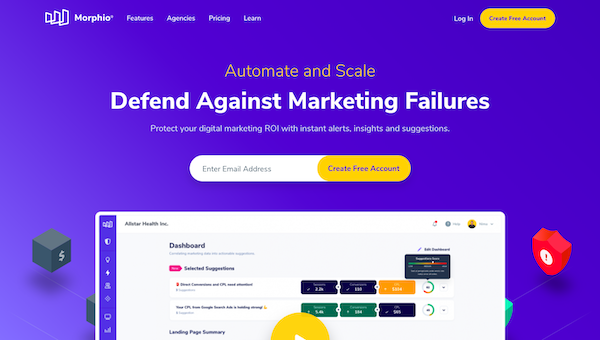
Morphio is a popular AI-powered digital marketing software that uses their anomaly detection tool to help you identify opportunities and trends fast. Morphio learns how your business performs and makes recommendations based on what they expect your future behavior to be.
With this tool, you can be alerted in real time about risks and search keyword anomalies.
Mophio's is free for up to 15 accounts with limited features. If you are interested in more features, pricing starts at $149 per month.
2. Exploding Topics
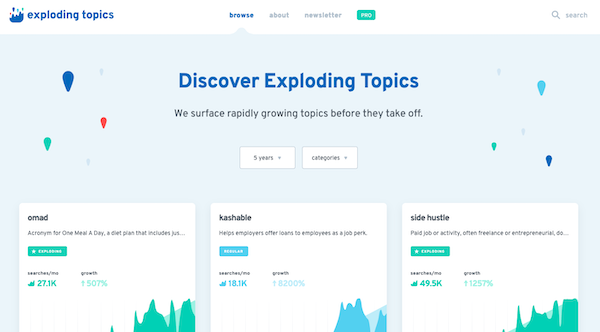
Exploding Topics is a tool that searches the internet for the best trending topics before they become extremely popular. This gives you time to get in on a topic before your competitors so your content can stand out.
Exploding Topics is free, so you can get started finding keywords right now to rank for up and coming topics.
3. Google Search Console
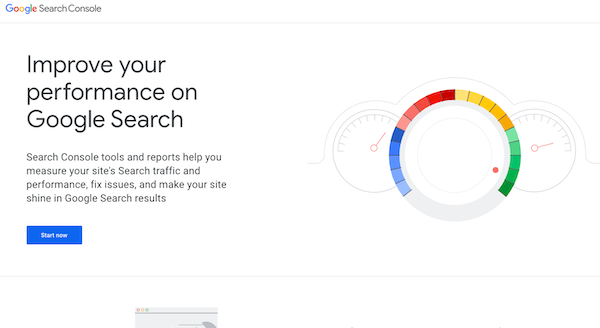
Google Search Console (GSC) is a free tool you can use to measure and optimize your site's performance. This helps you to identify dips in traffic with certain pieces of content. Once you examine your past content, you can then see what you can add to your content to capture new traffic.
You can also analyze the performance of your predictive SEO efforts to make sure you are on the right track.
4. Google Trends
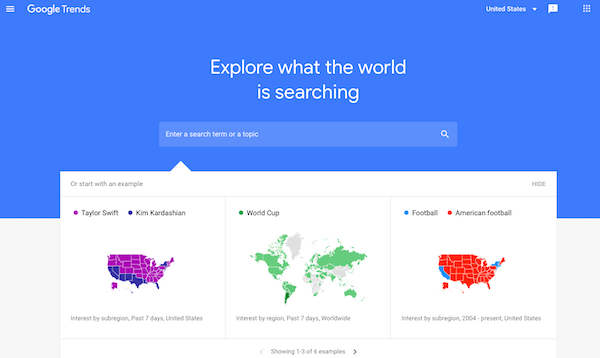
Google Trends is similar to Exploding Topics, except it allows you to see the current trends that your audience is searching for. Referencing a trending topic can help you to drive more traffic to your site. If you want to use Google Trends for predictive analysis, then you can search keyword terms and look at their popularity over time.
For instance, some keywords or topics may begin to gain popularity around a particular time of year. This helps you to plan your content ahead of time so you can attract the most traffic during the season when those queries are most popular.
5. SEO Dub
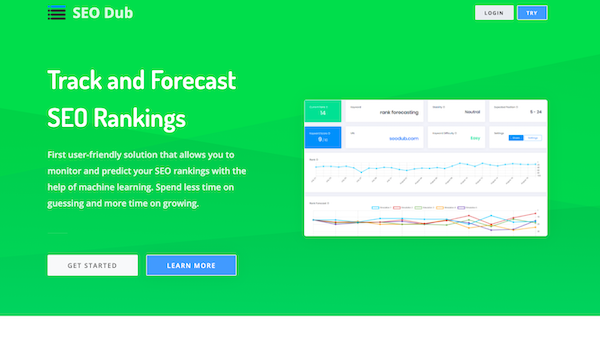
SEO Dub is an SEO forecasting system that provides you with custom made strategies based on your website as well as your competitor's. This tool audits some of the top ranking URLs to build a database that finds the least troublesome ways to increase your SEO rankings.
Don't go into your SEO strategy blind. Use SEO Dub to gain highly accurate insights into future ranking positions. Pricing starts at $19 per month.
SEO doesn't have to cost you so much effort when you're fixing problems, launching new campaigns, and taking action each time obstacles arise. There is a more proactive way to approach SEO in the modern marketing landscape that you can achieve using great tools and technology.

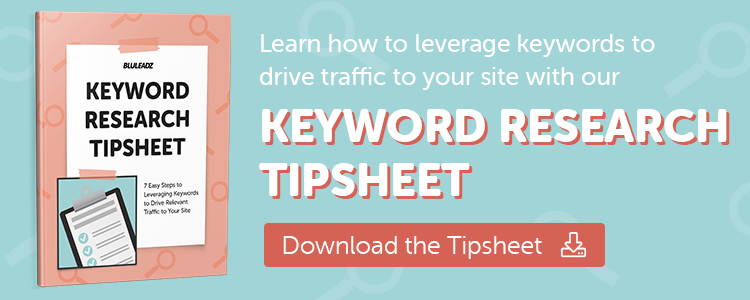
Erika Giles
Erika is a Marketing Copywriter at Bluleadz. She is a huge fan of houseplants and podcasts about conspiracy theories. She spends most of her free time reading, writing, and enjoying the outdoors.